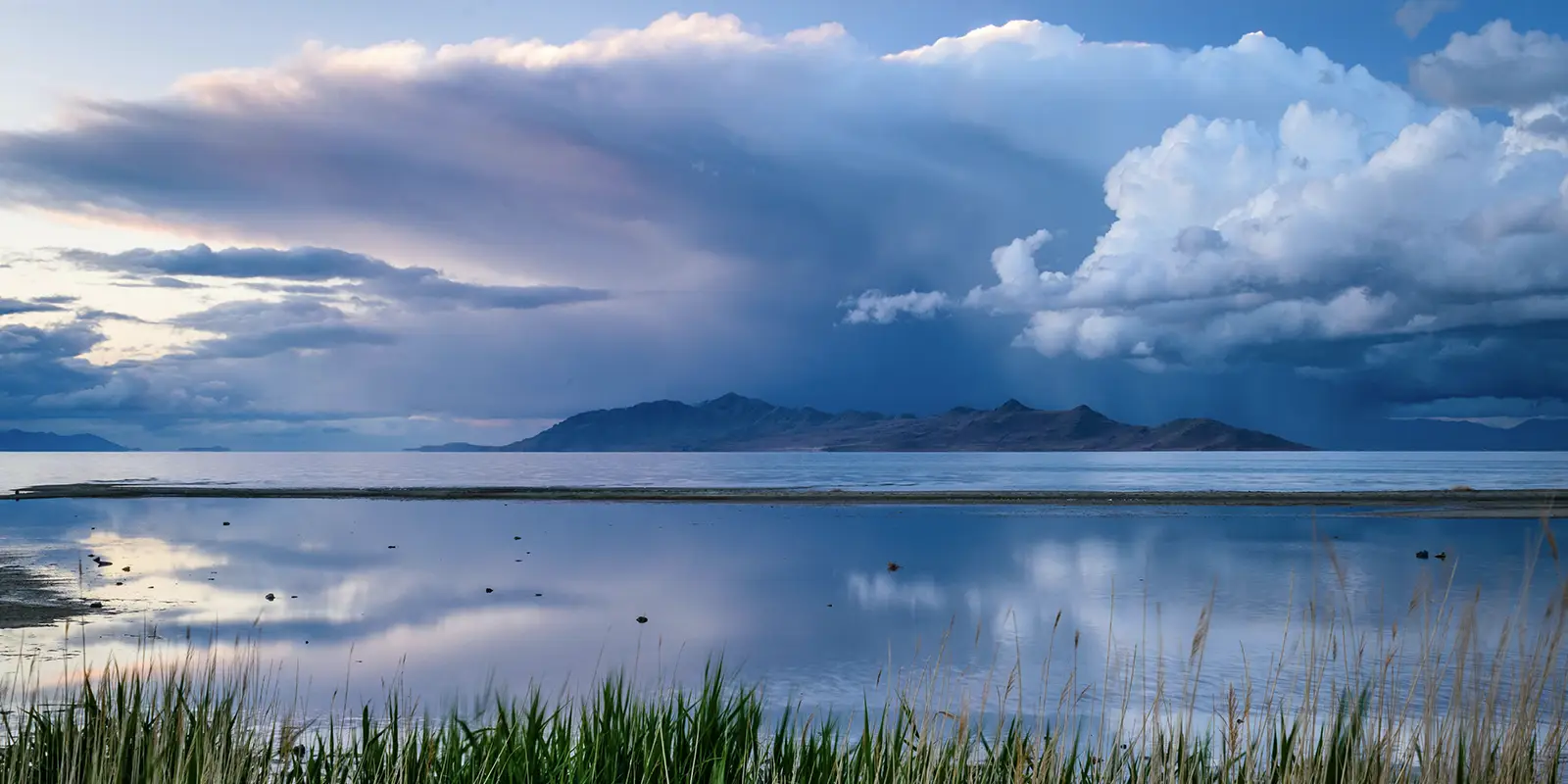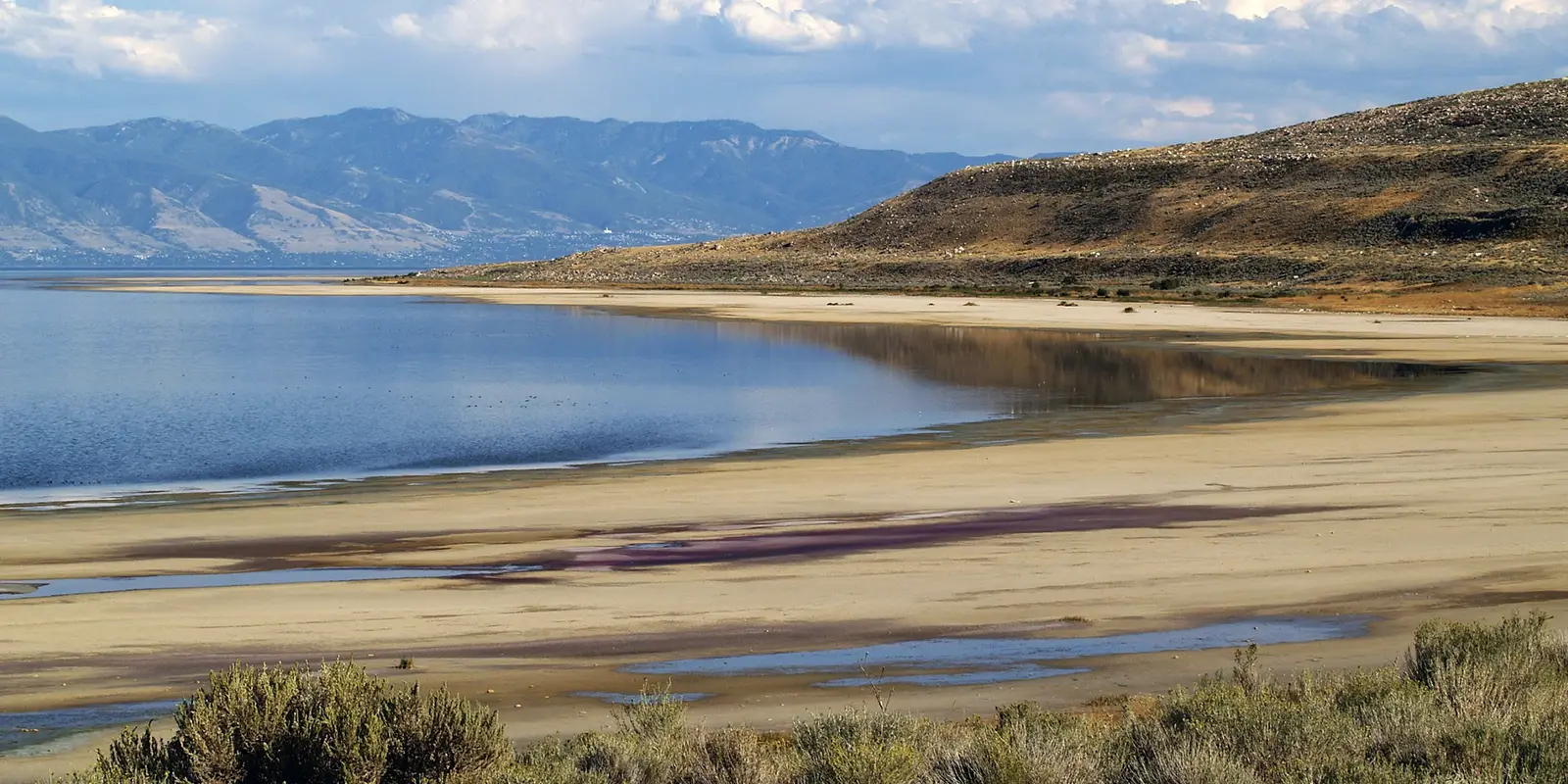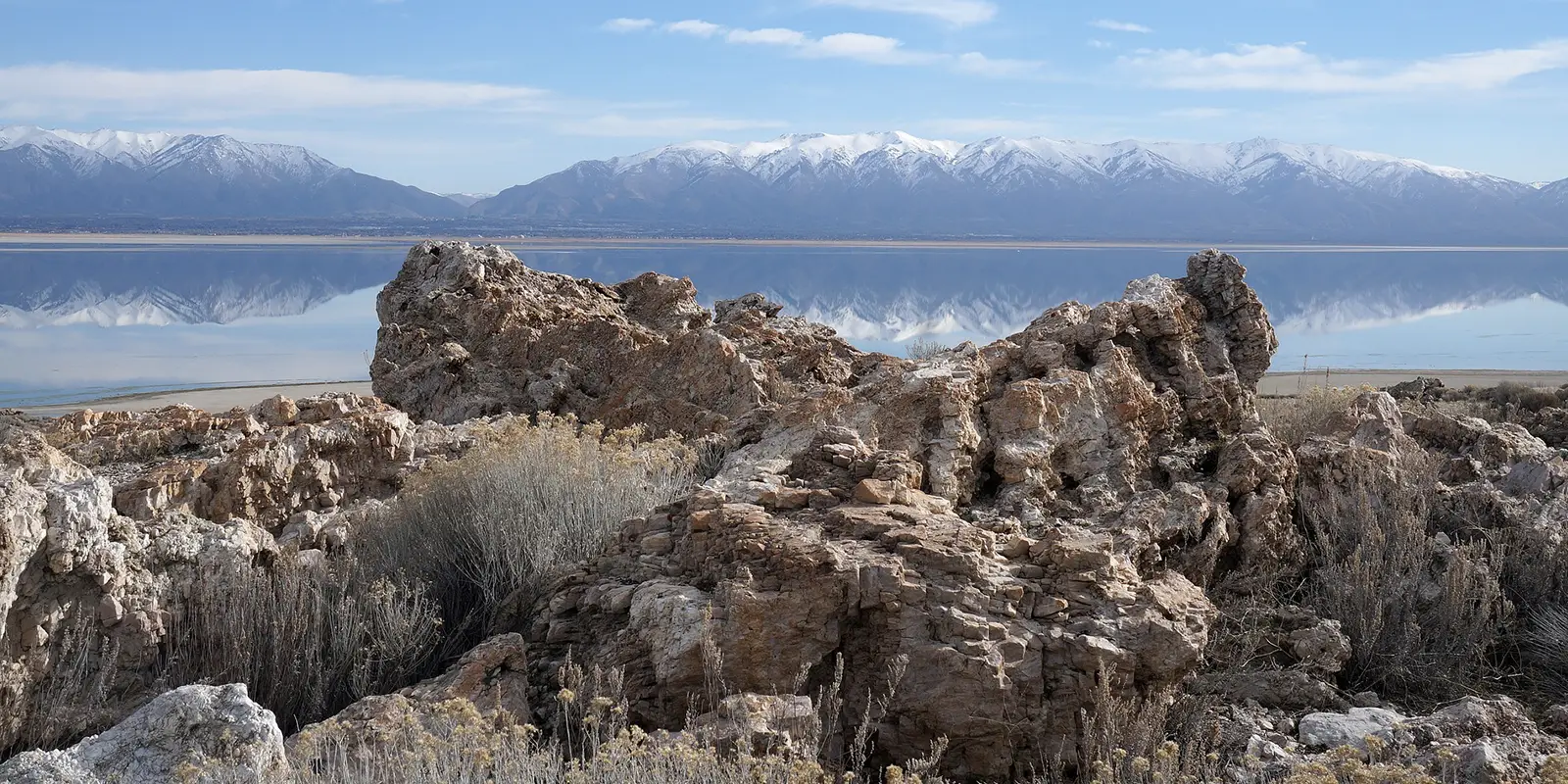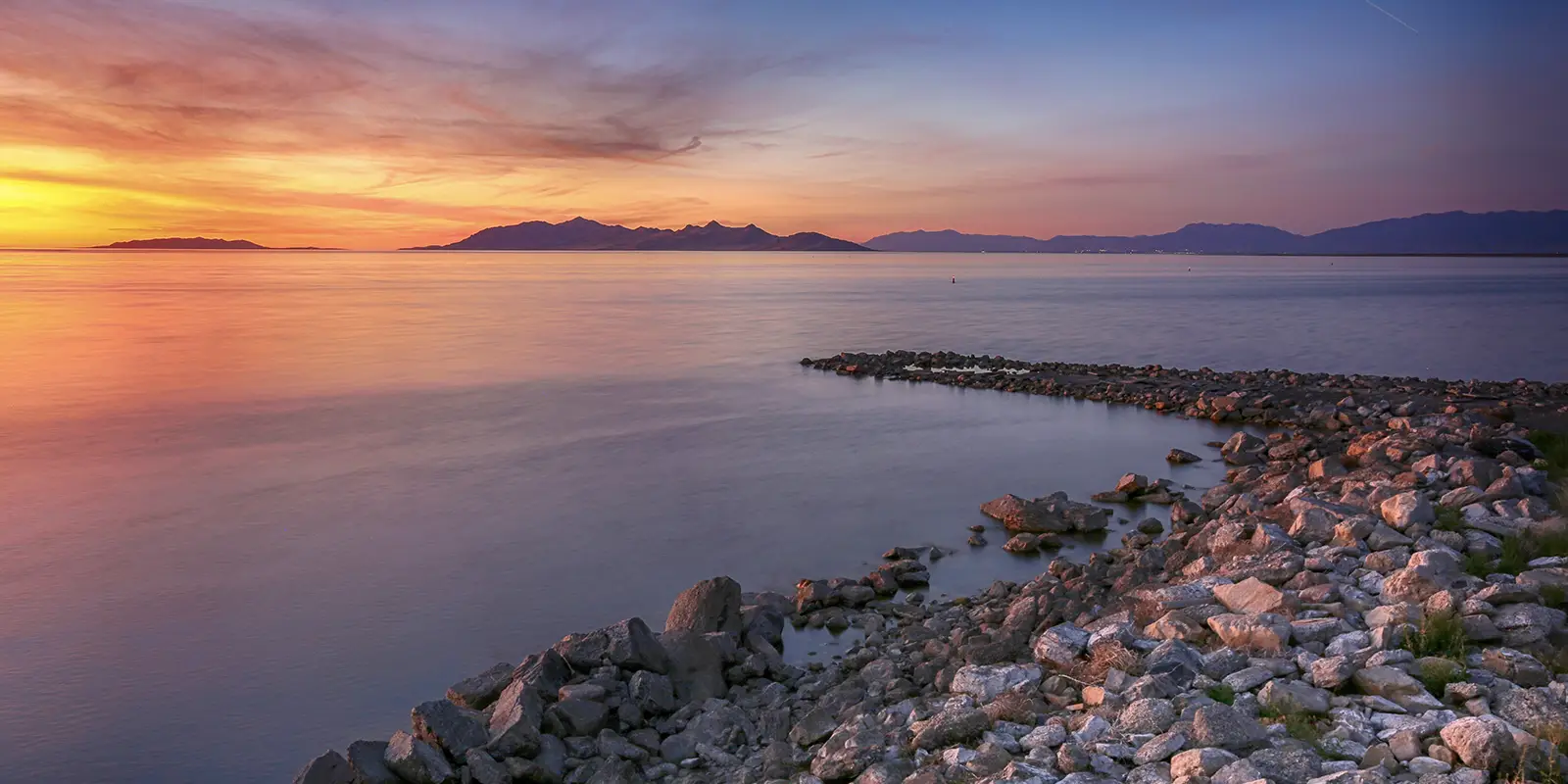The Great Salt Lake is shrinking and in distress, but continues to boast year-round, outdoor excitement, mostly off the water, primitive to luxurious accommodations, city attractions and creature comforts, and is surrounded by nature abounding with flora and fauna. Its high salt content renders it impractical for swimming, but a few people do swim in the Great Salt Lake.
What Are the Most Asked Questions About the Great Salt Lake?
People all over the world inundate search engines with questions about the Great Salt Lake (GSL). The GSL fascinates and intrigues people. This is evidenced by websites answering Utahn’s questions dedicated solely to Utah and the GSL and search engine’s general questions from around the world.
It depends on if someone lives in Utah or elsewhere. Utahns ask questions concerning GSL’s sustainability because climate conditions affect the lake’s conditions and all life forms in its region. People in other parts of the world ask questions more oriented to general topics. This article attempts to answer some of the questions.

Facts About The Great Salt Lake
The Great Salt Lake is the largest natural lake west of the Mississippi River in the U.S. Several wide flat basins form its lake bed, so a minor rise in water level swells its surface area. Since 1849, its water level has varied by approximately 20 feet and its shoreline by about 15 miles.
The Great Salt Lake is an endorheic lake. Endorheic lakes do not have water outflows. Endorheic lakes lose water by evaporation. This typically leaves these lakes with a high saline content because salt is made of sodium (Na) and chloride (Cl) ions held together by ionic bonds, and ionic saline compounds do not evaporate.
Great Salt Lake Questions from Utahns
No doubt, the GSL lies in a unique ecosystem. The following questions stem from Utah readers to the Great Salt Lake Collaborative and Utah Geological Society. GSL is in severe distress because a drought plaguing lakes and rivers in the Western U.S. began in 2000. The Western U.S. Drought affects 17 U.S. states—slightly over 1/3 of the entire country.
How Long Do We Have Before the GSL Becomes A Biohazard Site?
GSL is shrinking due to various factors. Dr. Kevin Perry, atmospheric scientist of the University of Utah, reported in 2021,
“Unfortunately, we are very close to a tipping point to which the wildlife will not be able to use the lake in the way they’ve become accustomed…Right now, most of the lake bed is covered by a crust… only 9% of the lake is currently an active dust source.”
In 2019, Dr. Perry pedaled 2,300 miles of GSL’s shorelines for over 125 days on a data-collecting expedition. The result of breathing GSL dust long-term causes health issues like cancer and cardiovascular disease. The severity of dust blowing off the lake will increase as GSL’s crust breaks up.
Which Parts of GSL MUST We Save And Parts We Can Forget?
Dr. Patrick Belmont, a hydrologist and geomorphologist at Utah State University, reports, “…triaging which parts of the lake [GSL] to focus on saving isn’t optimal at this point… I’m not saying it’s necessarily the wrong choice, but we can save the whole lake.”

Great Salt Lake Questions from the Public
Is it OK to Swim in the Great Salt Lake?
GSL will not poison swimmers. But, its high salt content causes cuts and people with sensitive skin to sting. Stings relent after a minute or two. The salinity of GSL varies between parts of the lake.
It is OK to swim in GSL. However, locals do not relish a dip in GSL. Salt seeping into a wound stings the wound. For example, the salinity ratio in GSL is’5% in Farmington Bay, the South Arm is 8-15%, and the North Arm is 28%. Fresh water flowing into the South Arm does not flow freely into the North Arm.
Why Is the Great Salt Lake Drying Up?
Universities in Utah house a hotbed of research which study how to reverse the damage caused by distinctly various factors that are drying up GSL. We should be aware of the biases of news outlets, no matter which way their ideology bends. This article cities only accredited and expert researchers.
The three reasons experts report that are causing the GSL to dry up are the Western Drought, population explosions in Salt Lake City and St. George, and farming methods and technologies. Experts report that these factors combined produce toxic dust clouds blowing off of GSL.
How Much Longer Will the Great Salt Lake Last?
Chad Yamane, the regional director of Ducks Unlimited, a nonprofit that conserves, restores, and manages habitats for North America’s waterfowl, reported in April 2023, “Biologists are worried that we’re on the brink of ecological collapse of the lake.”
Brigham Young University (BYU) researchers released this report in January 2023, which stated, “At 19 feet below its average natural level since 1850, the lake [GSL] is in uncharted territory. It has lost 73% of its water and 60% of its surface area. If this loss rate continues, the lake as we know it is on track to disappear in five years.”
BYU further reported, “Great Salt Lake is a keystone ecosystem in the Western Hemisphere. The lake and its wetlands provide minerals for Utah’s industries, thousands of local jobs, and habitat for 10 million migratory birds.”
Did People Used To Swim in the Great Salt Lake?
This question takes us back to U.S. Western history, when farmers, gold miners, prospectors, ranchers, settlers, and speculators were first weighing the pros and cons of Utah’s greatness with its bold terrain. We consulted a credible historical source, the Utah Division of State History, which unfolds a chapter of Utah’s history,
“Utahns considered bathing in the Great Salt Lake as healthful…Travel guides in the 1870s compared the Great Salt Lake to the Dead Sea, touting it as a natural remedy for respiratory conditions, digestive disorders, and other chronic illnesses. Doctors continued to recommend the healthful benefits of a swim in the Great Salt Lake in the 1890s.”
Why Don’t Locals Swim in the Great Salt Lake?
When we went to the small-town newspapers in Utah, we easily attained this answer. Western U.S. lakes are in trouble, and from our research, it appears that measures to mitigate GSL’s environmental issues are in place. Locals say off record that GSL is a “cesspool”. Researching local media outlets revealed why.
Because brine shrimp carcasses stink up GSL’s shorelines. Rotting brine shrimp on shores eat sargassum, a type of seaweed or brown algae. It provides food and refuge for fish, birds, crabs, shrimp, and many other marine organisms. When shrimp are dead and rotting or overcooked, they release a strong, sulfur-like odor from consuming sargassum.
Locals advise outsiders to bring lotion with them if they want to swim in GSL. We go to Axios at this time, because this news outlet did its due diligence in research. Axios is a curious anomaly in news media in 2024, and it asked the tough questions of the right experts on these local GSL issues:
“Amid warnings of toxic soil in the bed of the shrinking Great Salt Lake, swimmers have long wondered: Is the water itself safe?” Bonnie Baxter, director of the Great Salt Lake Institute at Westminster College, replied, “Those toxins are far less concentrated in the lake water than the soil or food chain.”
Why Is it Difficult to Swim in the Great Salt Lake?
This question leads to buoyancy and salinity factors, which swimmers face if they try to immerse themselves in GSL. Archimedes’ Principle and Buoyancy comes nicely into play, “When placed in a fluid, some objects float due to a buoyant force.”
It is difficult to stay underwater in GSL because its salinity content is a buoyant force. Objects are subject to float in a fluid if there is a source that keeps them afloat. Pressure increases with depth in a fluid if the upward force on the bottom of an object in a fluid is greater than the downward force on top of the object.
Plus, GSL waters adversely affect swimmers if they let GSL waters flow into their noses or mouths and open wounds. Suffice it to report, a buoyancy force decreases the actual weight of an object in a fluid, and the object floats.
Will the Great Salt Lake Ever Fill up Again?
Our research shows that the latest answers to this question are historically addressed by experts between January and April each year since the 2000 onset of the Western Drought. It appears to be too early for an objective prediction in 2024. Local Utah news radio outlets seemed the most reliable source of predictions for GSL in 2023. A to Z Animals is on top of this information for early 2024,
No one knows. “One offer to build a pipeline to the Pacific Ocean to bring water to the lake seems unreasonable to many experts. The act of building a pipeline might do more harm than good to the surrounding environment. Nevertheless, it’s clear that Utah experts and legislators alike are doing their part in solving the Great Salt Lake problem.”
Limnologist Wayne Wurtsbaugh’s team at Utah State University concluded that the source of Great Salt Lake’s water loss was largely due to water consumption by humans dwelling in the surrounding areas. It wasn’t about the water flow rate, but the amount of water flowing into the lake.
How Deep Is the Great Salt Lake?
The GSL, for centuries, has been shallow and vast with a few slightly deep pockets. Its long-term average depth at full pool was 14 feet, with a maximum depth of 33 to 34 feet. Today, in January 2024—not so true.
GSL’s depth depends on the H2O accumulation in GSL and its evaporation rate. The Great Salt Lake Utah Division of Water Resources reports, “…record snowpack in 2023 triggered a rise of 5.5 feet! In 2022 and 2021, the elevation only went up about one foot because of the poor snowpack.”
A to Z Animals stated in July 2023, “With its greatest depth at 33 feet and lowest at 4 feet, the Great Salt Lake is extremely shallow for such a large body of water.” Learn Genetics Utah reports, “In 2024…an average of 2.6 billion gallons evaporates from the lake [GSL] each day.”
Does the Great Salt Lake Have any Fish?
No. The GSL provides a habitat for millions of migrating birds. The Utah Division of Wildlife Resources tells us why,
There are no fish in GSL, “Because of the abundant algae and halophiles, as well as the high salinity, the lake does not support fish—but it teems with brine shrimp and brine flies, which provide essential nutrition for migrating birds.”

Things to Do at the Great Salt Lake
Visitors cannot do all there is to do at GSL in one week. GSL’s region offers year-round excitement. Its ski resorts and lake effect snow attract worldwide skiers. While swimming is not popular, mountains and wildlife abound. Locals and visitors can take full advantage of GSL’s bounty and choose from the following attractions and activities:
- Biking
- Birding
- The Great Salt Lake Shorelands Preserve
- Bird habitats:
- Major North American migratory bird flyway
- Vital shorebird breeding grounds.
- Camping
- Golfing
- Hiking
- Horseback Riding
- Kayaking
- Skiing
- Snow Shoeing
- Sledding/Tubing
- Salt Lake City:
- Restaurants: American and Global Cuisines
- Nightlife: Eclectic clubs from bohemian to upscale establishments
- Cathedral of the Madeliene
- Clark Planetarium
- Hogle Zoo
- Natural History Museum of Utah
- Red Butte Garden
- Salt Lake City Tabernacle
- Temple Square
- Tracy Aviary and Botanical Gardens
- Utah State Capitol
- Spiral Jetty: Land art by Robert Smithson at GSL
- State Parks:
- Antelope Island State Park
- Great Salt Lake State Park
- Tours
- Flying
- Great Salt Lake & Antelope Island
- Great Salt Lake Guided Bus Tour
- Wildlife and Sunset







